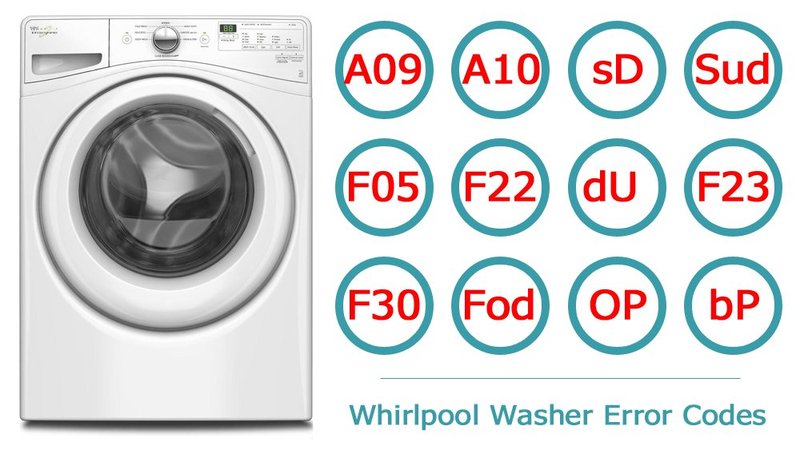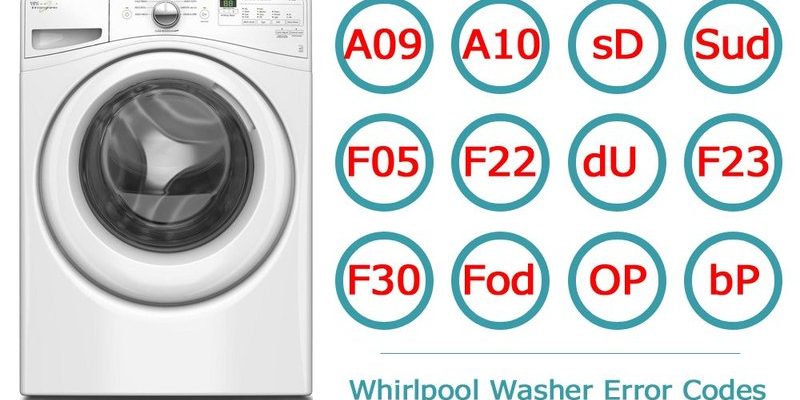
When your Whirlpool washing machine displays a “UE” error code, it’s essentially telling you, “Hey, something’s off balance here!” It’s the machine’s way of saying that it can’t spin because the load inside is unevenly distributed. Imagine trying to ride a bicycle with a wobbly wheel — it just doesn’t work smoothly. But here’s the real kicker: if the machine feels a little wobbly now and then, it’s usually nothing to lose sleep over. However, if that UE code keeps showing up, it might be time to investigate a bit more, and maybe, just maybe, call in the pros.
Understanding the UE Error Code
Let’s dive a little deeper into this UE error code. It’s not as mysterious as it seems. Picture your washing machine as a dancer that needs perfect balance to perform well. When clothes bunch up on one side of the drum, it throws off the balance, causing the machine to issue this UE code. This imbalance can prevent the spin cycle from starting or completing effectively.
Now, you might be wondering why this happens. Well, several factors can cause an imbalance. It could be as simple as a mix of heavy and light items, like towels and shirts, which disrupts the balance. Another reason could be the size of the load. Overfilling makes it hard for the drum to spin freely, while underfilling doesn’t provide enough weight to counterbalance the forces at play. Think of it like trying to twirl a lopsided pizza dough — it just won’t spin right!
So, before reaching for the phone to call your local technician, consider redistributing the clothes, adding or removing items, and giving it another whirl. Sometimes, just a quick reshuffle can sort things out. However, if you find yourself constantly rejigging your loads and still facing the same issue, it might be a sign of something more complex.
When to Call a Technician
Sometimes, despite your best efforts, that pesky UE error just won’t go away. When you’ve tried everything from rebalancing the load to adjusting the size, and nothing seems to work, it might be time to bring in a technician. But how do you know when that time has come? Here’s the scoop.
If your washing machine starts vibrating violently or making unusual noises even after rebalancing the load, it could indicate a deeper mechanical issue. Maybe the suspension rods or shock absorbers, which are crucial for stabilizing the drum during spins, need attention. It’s a bit like your car’s suspension — if it’s worn out, you’ll feel every bump on the road.
Another red flag is if the UE error pops up right away at the start of a cycle before it even begins spinning. This could mean the machine’s sensors or control board are on the fritz, struggling to properly detect the load’s weight and distribution. In cases like this, calling a technician is a smart move. They can diagnose these internal issues and save you from potentially larger problems down the line.
Ultimately, if your washing machine is throwing up the UE code more often than a Hollywood movie star in a press tour, it’s worth getting a professional opinion. A little expert tinkering could make that error a thing of the past.
Preventing Future UE Errors
Let’s talk prevention. Nobody wants to see that UE code all the time, right? Thankfully, with a few thoughtful practices, you can keep your washing machine humming happily along without the frequent interruptions of error codes.
Start by being mindful of how you load your machine. Balance is key. Just like stacking books evenly on a shelf prevents them from toppling over, evenly distributing clothes in the drum ensures smooth operation. Avoid overloading the machine; it’s like trying to cram a suitcase that’s already bursting at the seams. Instead, aim for a medium load that allows enough room for everything to move freely during the cycle.
Also, take note of mixing different types of laundry. Washing a mix of heavy and light items can throw off your washing machine’s balance, much like an unsteady seesaw. Try grouping similar items together, such as washing towels with other towels and shirts with other shirts. This simple step can make a big difference.
Finally, regular maintenance checks are your best friend. Inspect hoses for leaks, check for accumulated debris around the drum, and clean the detergent dispenser. It’s like giving your car a regular oil change — these small steps help prolong the machine’s life and keep it running smoothly.
By incorporating these practices, you’re not only reducing the likelihood of encountering that pesky UE error but also extending the life of your washing machine. If issues arise again, you’ll know when it’s time to call in the experts. Until then, happy washing!
